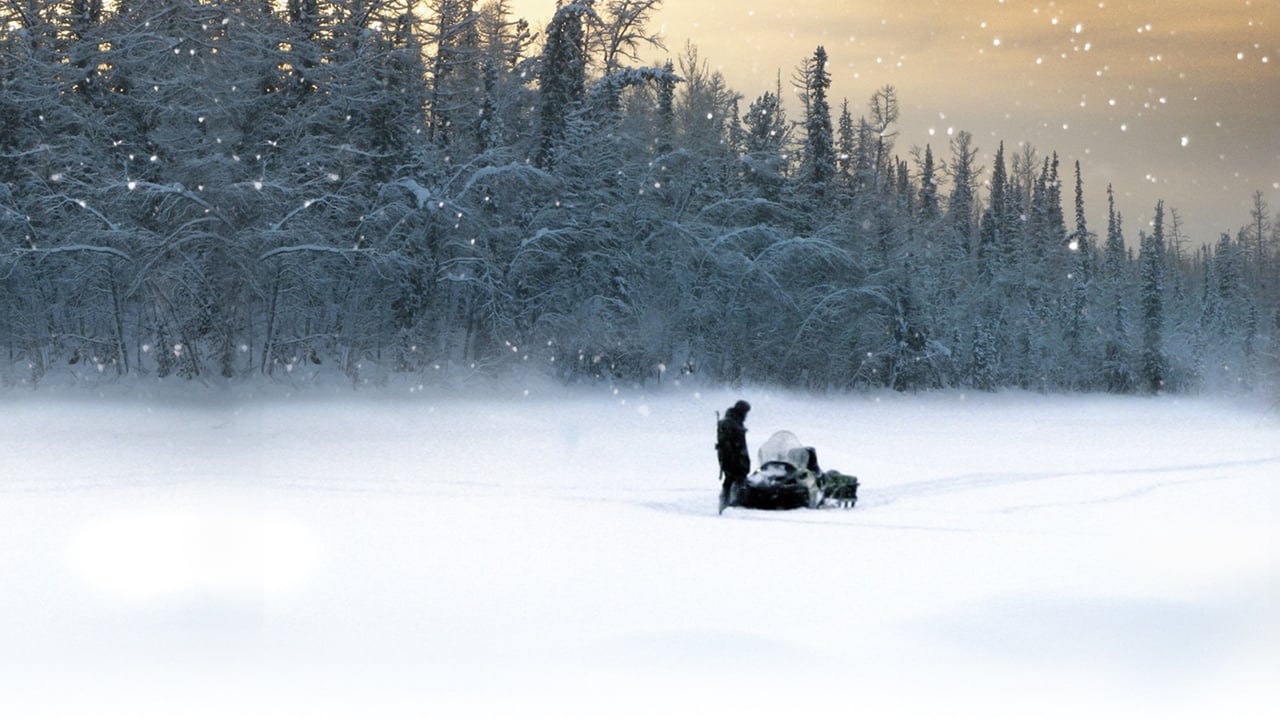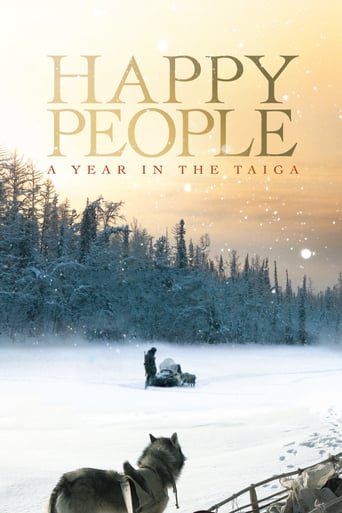

This documentary depicts the harsh life lived by some inhabitants of Bakhtia, Russia, a small village in Siberia (55 degrees north, 92 degrees east). Bakhtia is isolated, available only by ship and helicopter in the summer months. Otherwise the people there are on their ownThe movie concentrates on one Gennady Soloviev, a hardy fur trapper and hunter. Gennady is pretty much occupied full time just making a go of it--setting traps, stocking caches in summer for winter use, chopping wood, and so forth. Much of the year in the Bakhtia area is spent in sub-zero temperatures, with readings of -30F not being unusual. I am not too keen on being out at sub-zero temperatures for any great length of time. When Gennady sees that snow has damaged one of his cottages he has no problem with diving in and repairing it in -30F weather. The making of a canoe from scratch after downing a tree, using only an ax, was impressive--it is my observation that that is not a common talent in 21st century America. Paddling against the current on the Yenisei River looks to be an activity only for the strong. Watching this made me realize how far from elementary survival concerns most people in the United States are.The movie credits Dmitry Vasyukov as co-director. Vasyukov actually filmed all of the material for a four hour documentary and, for this movie, Herzog has taken that footage and edited it to 90 minutes, adding his narration. It would be of interest to see the original, since I suspect Herzog has imposed a certain idealized romanticism that reflects his own views rather than those of Vasyukov.For example, Herzog comments that, "They live off the land and are self reliant, truly free. No rules, no taxes, no government, no laws, no bureaucracy, no phones, no radio, equipped only with their individual values and standard of conduct." I think no society, however small, can function without understood rules and some form of structure. Gennady has the right to trap on a certain land area, such area being delineated by government oversight. The self reliance is not totally true. How did Gennady come by his snow mobile and chainsaw? Where did the gas come from to power those machines? Supplies were flown in by helicopter and ship; how were those supplies paid for? I wanted more information on the local economy. Since trapping sables was prized, I assume that sable fur was sold to high end consumers as part of how the trappers could afford to buy their supplies.As for happiness, I did not see these people as being exceptionally happy. Gennady admitted to despising some trappers that he saw as greedy. Is Gennady any happier than a computer programmer in Los Angeles who is passionate about her work?
... View MoreInteresting documentary on the lives of trappers and hunters in deep Siberia, along the banks of the river Yenisei, during the four seasons of the year. For instance, in summer, we see them fishing and collecting nuts and berries. In autumn, we see them preparing traps, collecting and splitting wood and hoarding food as they prepare for the winter, where the weather can be as low as -50 degrees centigrade. They have a hermit, mostly self reliant life style, living in log cabins deep in the forest accompanied only by their dogs, with minimal contact with other people. They also seem to be exclusively male. They have some modern technology at their disposal, though they also live and hunt with traditional instruments. Despite the title, they do not seem particularly happy, they look more like taciturn, silent and reserved, able to make a living with very little. The documentary also had a detour seeing the native, shamanistic, Vodka-ravaged Ket people fishing and building their boats (an interesting fact, not mentioned in the movie, is that the Ket people are believed by anthropologists and geneticists to be the closest ancestors of native Americans). Note: This has been widely credited as a Werner Herzog film, but all the German director did was edit an original Russian TV miniseries directed by Dmitri Vasyukov (he filmed them year round) that lasted four hours into 90 minutes for international release. Herzog also provides narration in his trademark German accented English, accompanied sometimes by his ponderous philosophizing.
... View MoreWerner Herzog's "Happy People: A Year in the Taiga" is comprised of footage shot for another documentary by Russian director Dmitry Vasykov. Vasykov's film, roughly four hours long, detailed the lives of trappers living in the Siberian wilderness. Impressed with Vasykov's material, Herzog reassembled the footage, added his own structure and voice over narration. "We are all killers and accomplices," one trapper says, "even those who are kind hearted." The rest of the film crawls its way through material familiar to Herzog fans. We watch as tiny men struggle to survive in the wild and struggle to stay sane amidst a Nature which threatens to suffocate. Herzog's trappers spend much of their time alone, at war and stuck in an ongoing cycle in which they fight the elements. Each potion of the year seems spent preparing for the next.There are some moments of humour, like one scene in which a ridiculous politician visits the Taiga, but for the most part Herzog's customary absurdity is absent. Likewise, though there are some sublime sequences (night time shots of a snow-capped village, for example), the majority of the film lacks Herzog's unique eye. This is understandable, as Herzog shot no footage himself. Some have found Herzog's portrayal of the Siberian wilderness to be cosy and romantic, but this is to misread the film. The "Happy People" of Herzog's title is partially ironic, his film focusing on a kind of tired drudgery. Locals are alcoholics, there is no paid work, men are separated from their families and the trappers live solitary lives seemingly torn from the Myth of Sisyphus. Perhaps only Western eyes can romanticise what Herzog shows here; his characters show no signs of pursing material possessions, are far removed from all pop culture trappings and are busy clinging to skills and traditions which seem on the verge of being lost to time. To some, this conveys a very specific form of nostalgia. On another level, though, the film's title is very sincere. These trappers are men locked in a kind of Herzogian "natural state", free from modern neuroses, modern wants, manufactured desires and content with the fruits of their labour, their living conditions and their lots in life. They don't moan, but knuckle down and get on with things. Herzog challenges our notions of contentment and happiness on one hand, whilst also deglamorising a kind of fashionable survivalism on the other.7.9/10 – One of Herzog's more conventional documentaries. Incidentally, the film features a relative of famed Russian director, Andrei Tarkovsky. Worth one viewing.
... View MoreIf you like Werner Herzog then this film won't disappoint. His style is simple, honest and transparent. He gives you a clear sense of the reality of what most people would perceive to be a harsh way of life in the Russian Taiga. We see humans who are connected to the cycles of nature, to the animals, the forest and to their traditions. There is a quiet wisdom and deep joy in this way of life and the film serves as a powerful contrast to virtually every other piece of media being made today. The film is like poem to a way of life that now seems like a distant dream. It is beautifully shot, with vignettes that look like they are living paintings; Russian characters from the time of Tolstoy or Dostoyevesky.
... View More